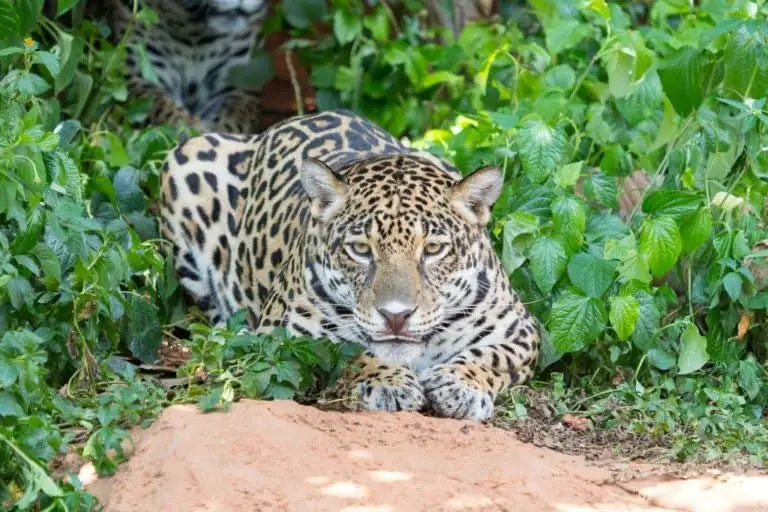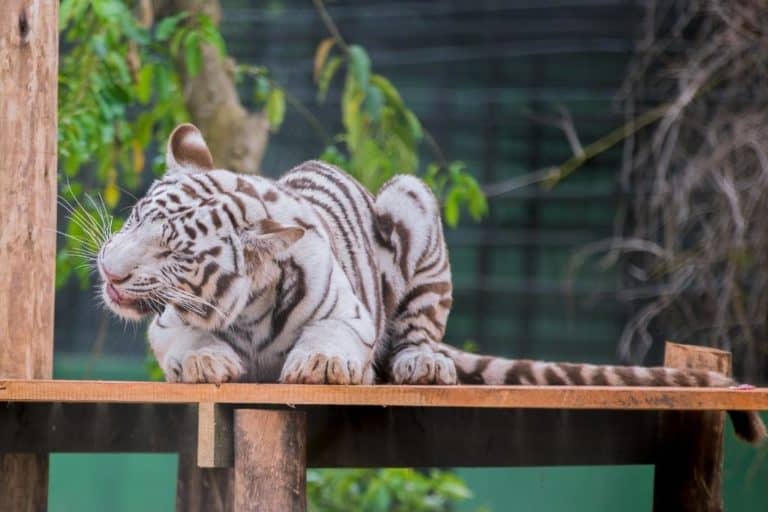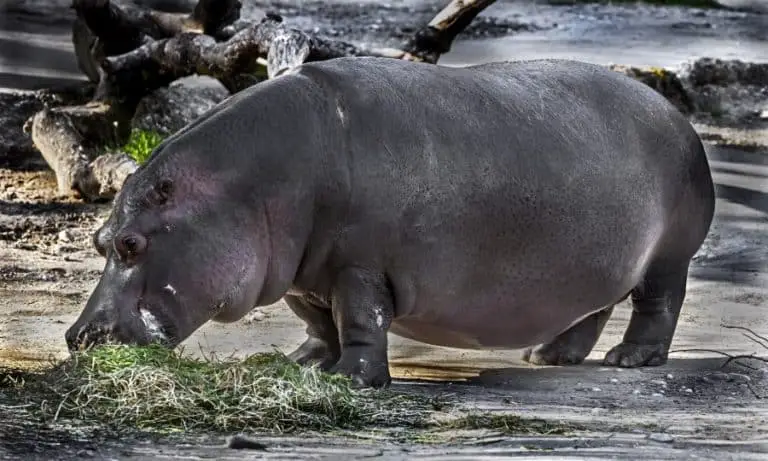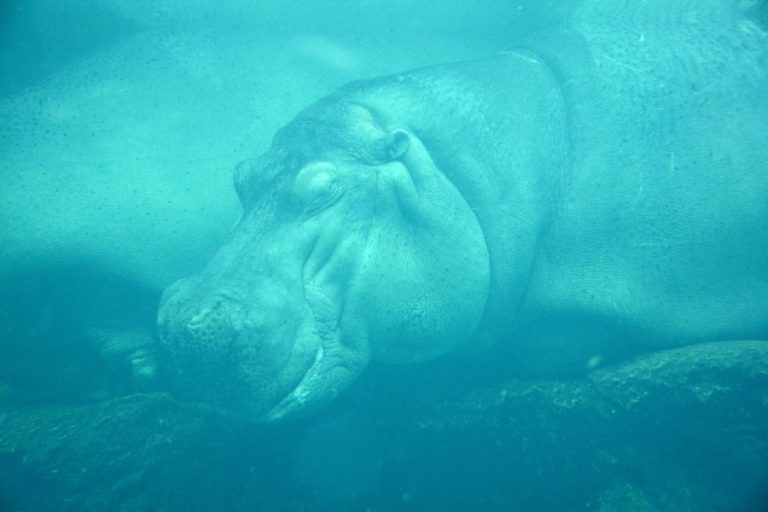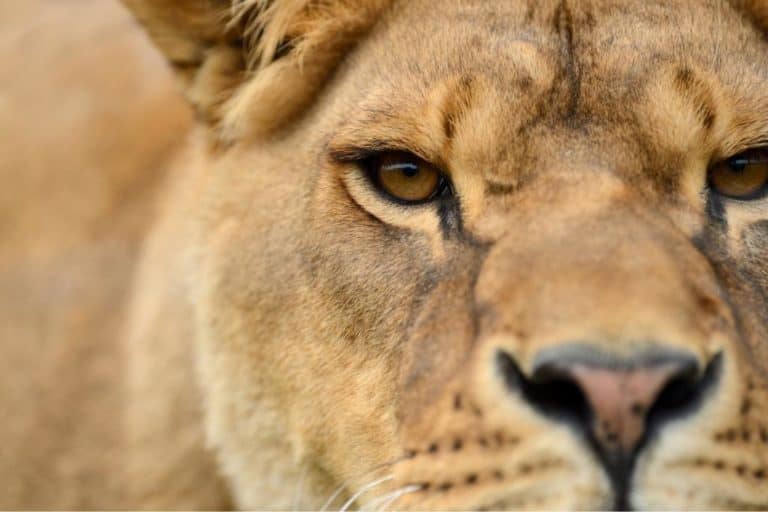Top 16 Largest Mammals in the World
The largest mammals in the world are some of the most impressive creatures. They vary significantly in size, from the tiny manatee to the massive elephant.
Some of these animals are herbivores, while others are predators that hunt and scavenge for food. Here is a list of the ten largest mammals in the world, based on weight.
1. Blue whale
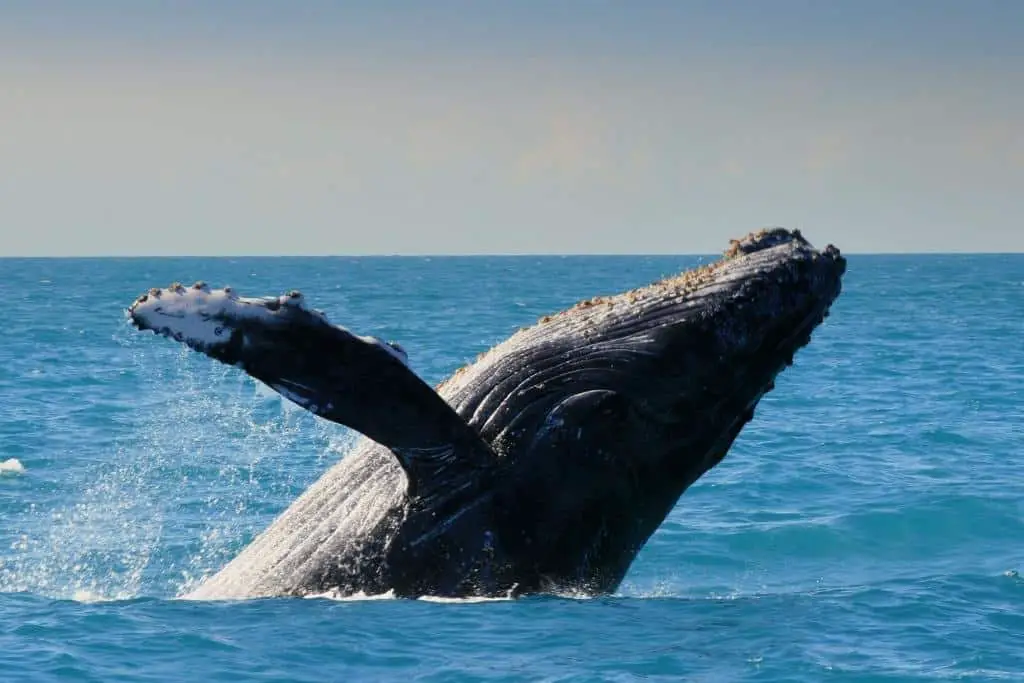
The blue whale is the largest animal on Earth, weighing around 200 tons and measuring up to 100 feet in length. These massive creatures are found in all the world’s oceans, but they are most commonly seen in the cold waters of the Arctic and Antarctic.
Blue whales are filter feeders and subsist primarily on tiny shrimp-like creatures known as krill. During the day, an adult blue whale can consume up to 4 tons of krill.
To accommodate this vast quantity of food, blue whales have giant mouths. Their tongues can weigh as much as an elephant, and their throat pleats allow them to take in large amounts of water filtered out by their baleen plates.
Blue whales are social creatures and often travel in small groups. However, they are not currently considered to be endangered. The blue whale population has begun to recover from its last decline thanks to international conservation efforts.
- Lifespan: 80 – 90 years.
- Weight: 200 tons.
- Length: 100 feet.
2. African elephant
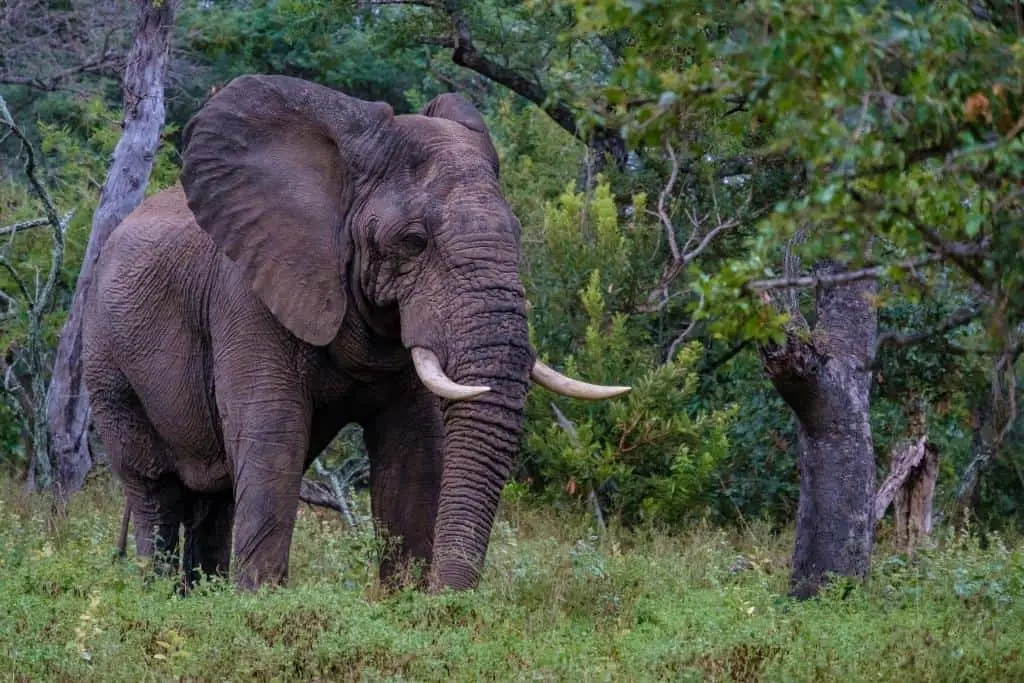
The African elephant is the world’s largest land animal, with males reaching heights of up to 13 feet and weighing up to 14,000 pounds. Females are slightly smaller but still impressive, with peaks of up to 9 feet and weights of up to 12,000 pounds.
African elephants are distinguished from their Asian cousins by their larger size and distinctive ears, shaped like the continent of Africa. African elephants are found across the sub-Saharan region of Africa, in countries such as Kenya, Tanzania, and Botswana.
They are most commonly found in savanna and grassland habitats, but they can also be found in forested areas. African elephants are herbivores, meaning that they primarily eat plants.
They eat a wide variety of plant life, including leaves, stems, bark, and fruits. African elephants are social animals, living in groups of up to 20 individuals.
These groups are led by a matriarch, the oldest and most experienced female in the group. The matriarch is responsible for leading the group to food and water sources and protecting the younger members from predators. African elephants have a lifespan of 60-70 years in the wild. However, they are increasingly threatened by habitat loss.
- Lifespan: 60 – 70 Years
- Weight: Female 12,000 lbs / Males 14,000 lbs.
- Length: 24 Feet on average.
3. White rhinoceros
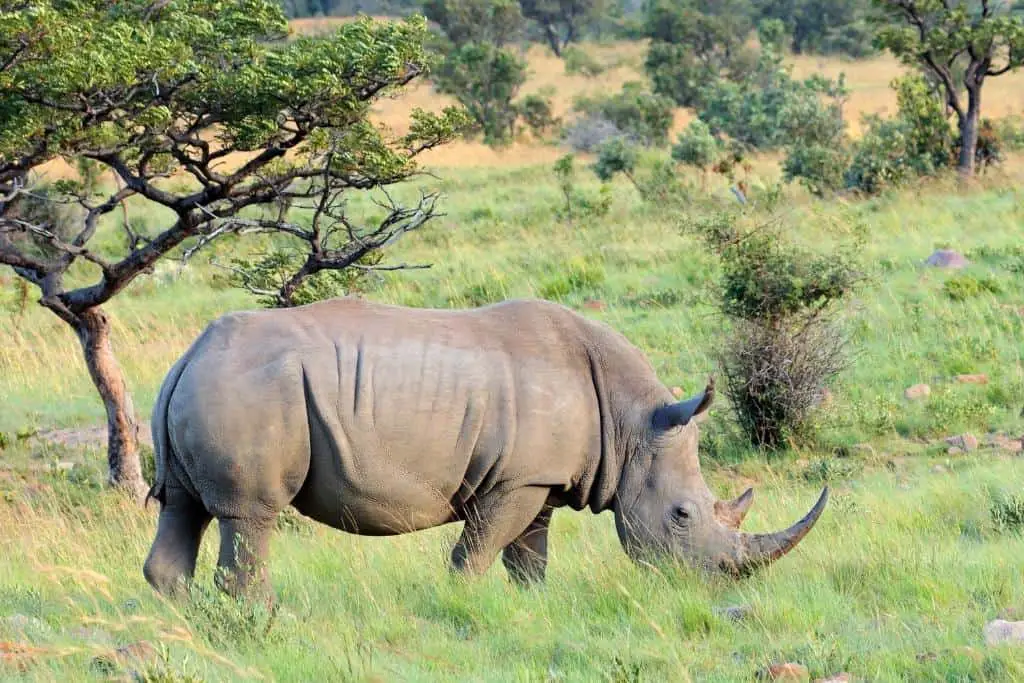
The white rhinoceros is the largest rhinoceros species and one of the largest land mammals. Adult males can weigh up to 5,000 pounds and stand nearly six feet tall at the shoulder. Females are usually slightly smaller.
The white rhino is distinguished from other rhino species by size and coloration. Its name comes from the Dutch word “weit,” meaning wide, a reference to its square upper lips.
The white rhino is a grazer, eating primarily grasses and leaves. It is a social animal living in small herds of around 10 individuals.
The white rhino is native to Africa, where it once roamed across much of the continent. Today, however, its range has been reduced to just a few countries in southern Africa.
The primary threat to the white rhino is poaching, as its horns are prized for use in traditional Asian medicine.
As a result, the white rhino is classified as “Critically Endangered” by the International Union for the Conservation of Nature. However, this magnificent animal may be saved from extinction with proper protection and conservation efforts.
- Lifespan: 40 – 50 Years
- Weight: 5,000 Pounds
- Length: 13 inches on average.
4. Hippopotamus
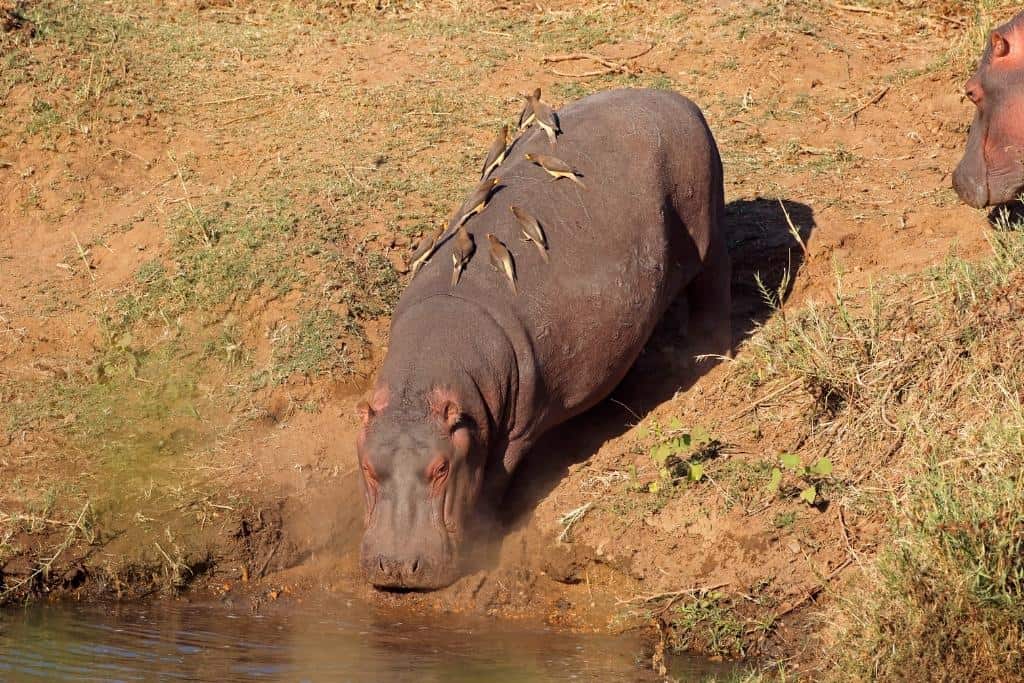
The hippopotamus is a massive mammal that inhabits rivers and lakes in Africa. Although they are often considered lazy creatures that spend most of their time wallowing in the water, hippos are active animals.
They use their large teeth and powerful jaws for grazing on grasses, and they are capable of running at speeds of up to 30 miles per hour.
Although they are herbivores, hippos can be aggressive animals and have been known to attack and kill humans.
However, their greatest threat is humans hunting them for meat and ivory. As a result of hunting and habitat loss, the hippopotamus is classified as a vulnerable species.
- Lifespan: 40 – 50 Years
- Weight: Between 3,500 to 9,920 pounds.
- Length: Between 10.8 and 16.5 feet
5. Grauer’s gorilla
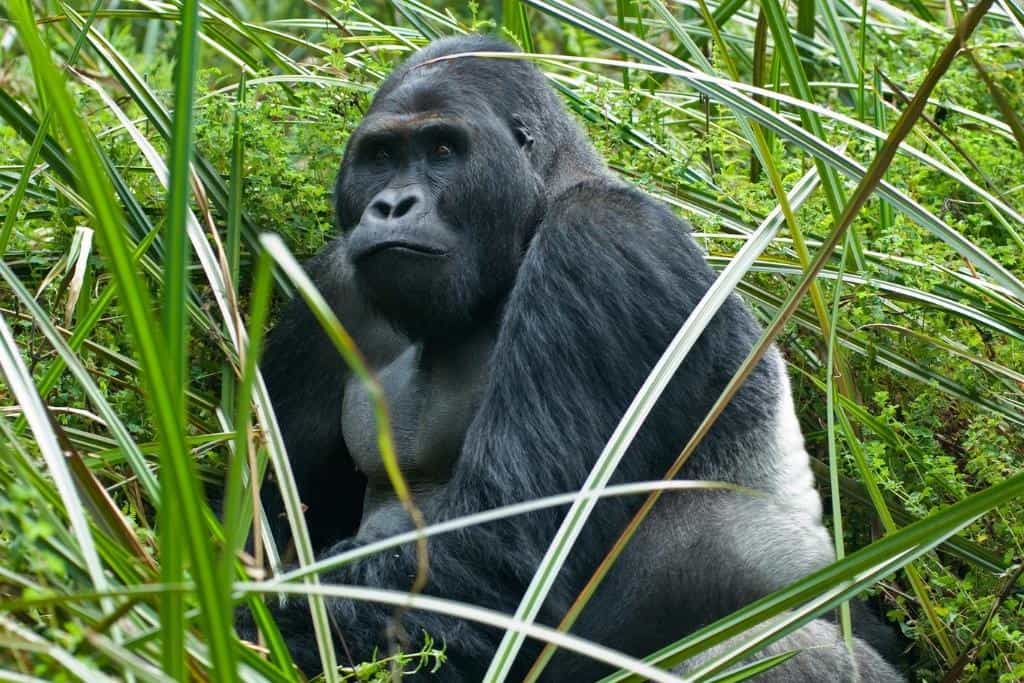
Grauer’s gorilla, also known as the eastern lowland gorilla, is a subspecies of the Eastern gorilla. They are the largest of the four gorilla subspecies.
Adult male Grauer’s gorillas are substantially larger than adult females, with males averaging 400 pounds and females averaging 250 pounds. Males also have significantly longer arm spans, reaching up to 7 feet when fully extended.
Grauer’s gorillas are found only in the Democratic Republic of Congo wild. They inhabit dense tropical rainforests at altitudes ranging from 8,000 to 13,000 feet.
Grauer’s gorillas are shy and reclusive by nature, and much of their day is spent feeding on leaves, stems, fruit, and other vegetation. They also eat small mammals such as rodents and insect larvae.
Despite their large size, Grauer’s gorillas are proficient climbers and spend much of their time in trees. They are also knuckle-walkers, using their hands and knuckles to support their weight as they move about on all fours.
Grauer’s gorillas typically live in small groups consisting of a single adult male, several adult females, and their offspring. However, groups of up to 35 individuals have been observed.
- Lifespan: 35 to 50 Years
- Weight: Between 450 and 550 pounds
- Length: 6 Feet.
6. American Bison
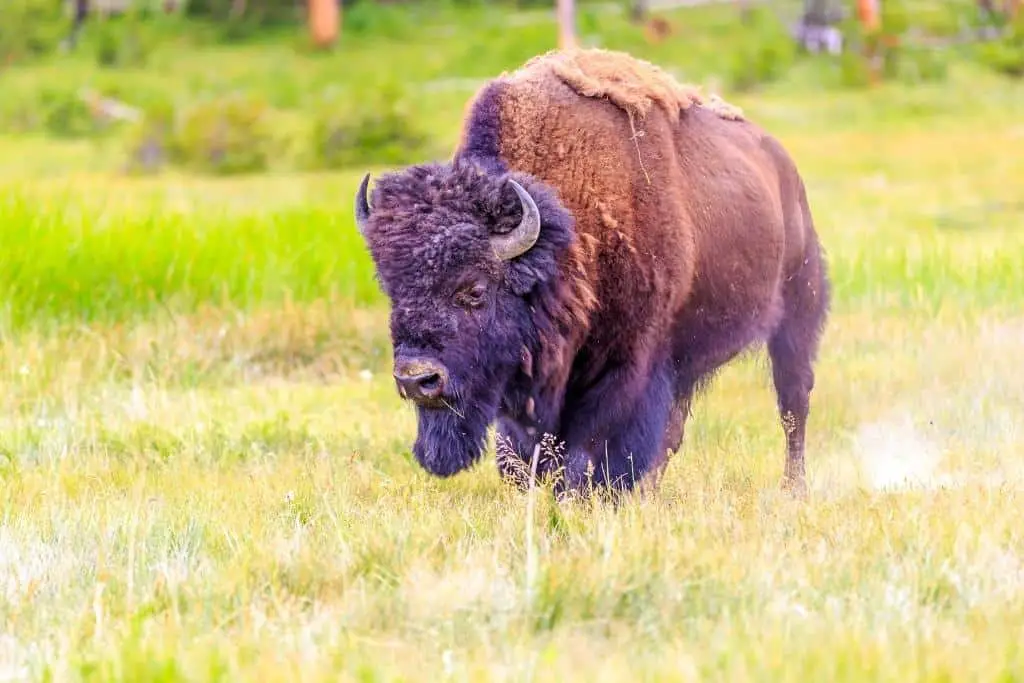
The American Bison is a national icon, symbolizing the strength and spirit of the United States. These massive mammals once roamed the plains in great herds, but their numbers dwindled to extinction due to hunting and habitat loss.
Thanks to conservation efforts, the American Bison is returning, with an estimated 30,000 animals now living in public and private herds.
These shaggy-haired beasts can weigh up to 2,000 pounds and stand six feet tall at the shoulder, making them one of the largest land mammals in North America.
Bison are social animals that live in herds of up to 20 individuals.
They are herbivores that graze on grasses and other plants.
The American Bison is an integral part of our country’s natural heritage, and it is heartening to see these magnificent animals thriving again.
- Lifespan: 20 Years
- Weight: Up to 2,000 pounds.
- Length: 6 Feet.
7. Brown bear
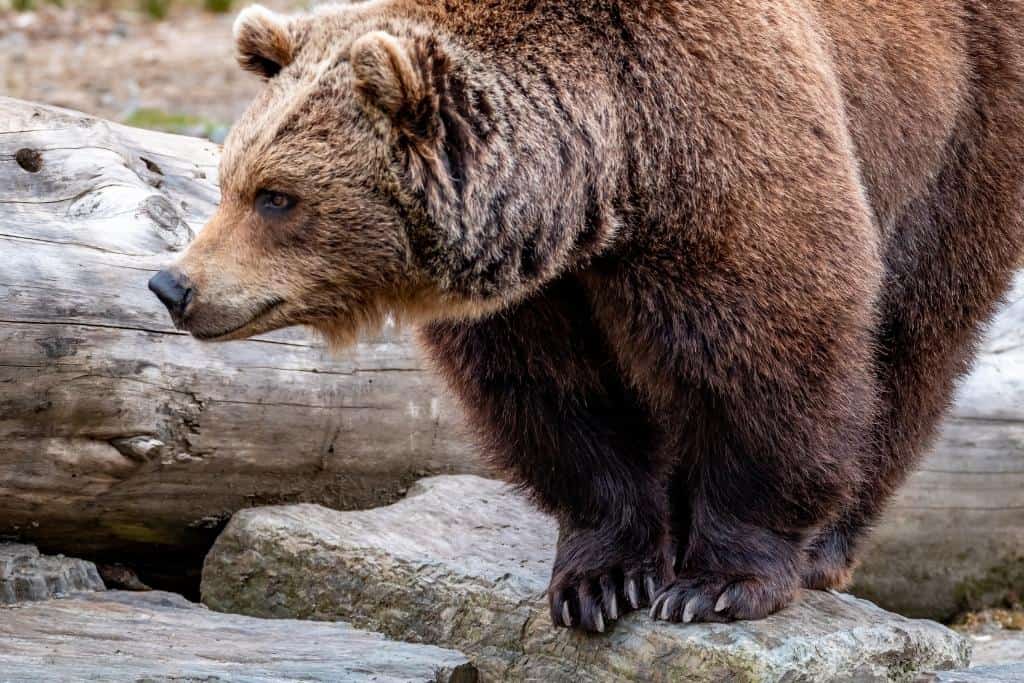
The brown bear is a large mammal of the order Carnivora. The brown bear’s principal range includes parts of Russia, Central Asia, China, Canada, the United States, Scandinavia, and the Carpathian region of Europe.
It is one of the world’s largest land carnivores and can weigh 1,500 lb.
Brown bears are sometimes referred to as bruins or grizzlies. Male brown bears are typically 30/50% larger than females.
Coastal bears use storage beds much more frequently than inland bears; both sexes will begin digging their dens for 2–4 months before entering them for hibernation in November or December.
Holes may be found anywhere animals have dug or created an excavation, including:
- Under a rockfall,
- In a hollow tree or log,
- In another animal’s home, such as a beaver dam.
Once inside, the bear will enlarge the den by digging deeper into the hillside and sometimes excavating a side tunnel. Brown bears typically hibernate for 5–8 months.
- Lifespan: 20- 30 Years
- Weight: 300 to 860 pounds.
- Length: 5 – 7 feet.
8. Polar bear
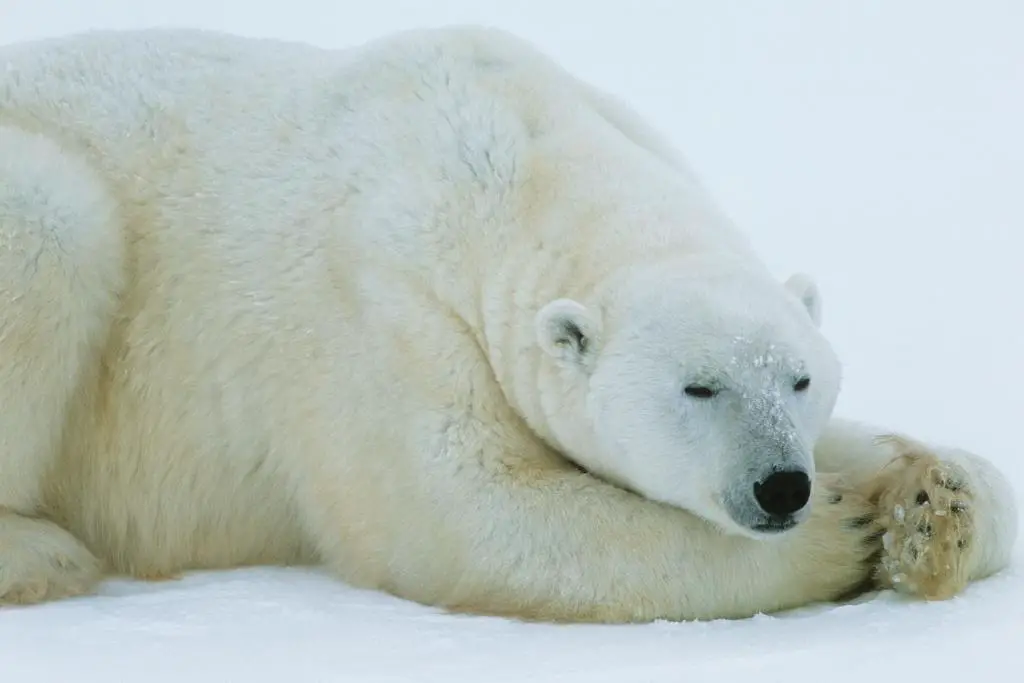
The most prominent member of the bear family, the polar bear, is a magnificent and powerful animal. In the Arctic Circle, polar bears inhabit some of the most hostile environments on Earth.
Despite their name, these bears are not white; their fur is translucent and appears white because it reflects sunlight. Underneath the hair, polar bears have black skin, which helps absorb solar heat. This helps to keep them warm in their cold environment.
Polar bears are excellent swimmers and have traveled more than 15 miles daily in search of food.
Their diet consists primarily of seals, which they hunt using their sharp claws and powerful sense of smell. As the climate continues to change, polar bears are increasingly threatened by the loss of ice habitat and declining prey populations.
As a result, these majestic animals risk disappearing from the wild forever.
- Lifespan: 25 – 30 Years
- Weight: 1,700 pounds.
- Length: 8 – 10 Feet.
9. Giraffe

The giraffe is an African mammal easily recognizable by its long neck and legs. They are the tallest mammals on Earth, and their height can range from 16 to 19 feet.
Despite their size, giraffes are very graceful animals. They can run as fast as 35 miles per hour and are excellent swimmers.
Giraffes are primarily herbivores and spend most of their time eating tree leaves. However, they will eat fruit, flowers, and even small insects.
Giraffes are social animals typically live in herds of 10-20 individuals. These herds provide protection from predators such as lions and cheetahs.
Although giraffes are not currently endangered, they face many challenges, such as habitat loss and poaching. As a result, conservation efforts are necessary to ensure that these magnificent animals continue to thrive in the wild.
- Lifespan: 25 – 30 Years
- Weight: 3,000 Pounds.
- Height: Up to 18 Feet.
10. Moose

Moose are the most prominent members of the deer family, and they can be found in forested habitats across North America and Europe.
Moose are distinguished by their large size, long legs, and massive antlers.
- Males can weigh up to 1,400 pounds and stand over six feet tall at the shoulder.
- Females, or cows, are slightly smaller but can weigh over a thousand pounds.
Moose are herbivores and rely on a diet of leaves, twigs, and buds to stay healthy. In winter, when food is scarce, moose will also eat bark and moss.
Although they are generally solitary animals, moose will gather in small groups during the mating season.
Bulls will compete for cows by engaging in spectacular displays of antler wrestling. The winner of these contests will earn the right to mate with several females.
Calves are born in early spring, and they will stay with their mothers until the following late summer. After that, they will strike out on their own in search of new territory.
Moose are relatively long-lived animals, and bulls have been known to live for up to 16 years in the wild.
- Lifespan: 15 – 20 Years
- Weight: 1,200 to 1,600 pounds.
- Length: 5 to 6.5 feet.
11. Cape Buffalo
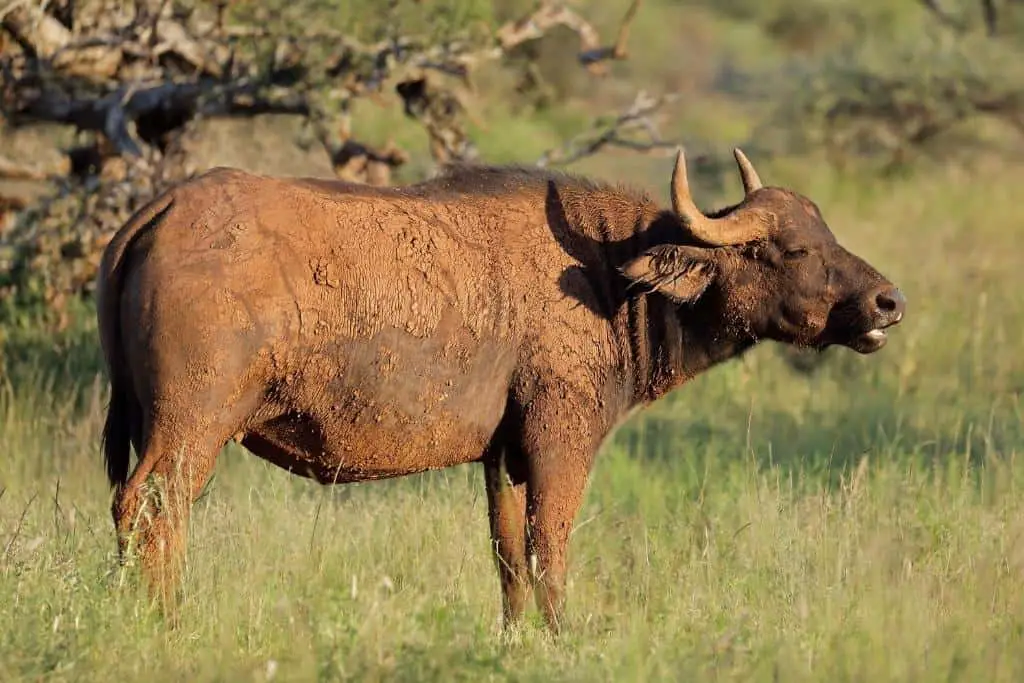
The Cape buffalo is a large African bovine. It is the typical representative of the subfamily Bovinae, family Bovidae, and order Artiodactyla. It occurs in woodlands and savannas of sub-Saharan Africa, stretching from Sudan in the north to South Africa in the south.
Despite its extensive range, it has never been domesticated, and its nearest relatives are other wild bovines, such as the container antelope. The body of the Cape buffalo is stocky, with short legs and shoulders.
The horns are heavily fused at the base, forming a shield on the forehead called bosses. Both sexes have horns, but those of cows are generally thinner and point backward, while those of bulls tend to be thicker and curve forward.
Bulls also tend to be larger than cows, weighing up to 2000 lbs compared to 1300 lbs for cows.
Cape buffalo are generally black or dark brown, although some populations display a light grey coloration. Calves are born red or orange before they darken to adult coloration.
Cape buffalo herds can reach 1000 individuals, but these herds can grow to much larger sizes during migrations when several thousand animals may travel together.
- Lifespan: 15 to 25 Years
- Weight: 1100 to 2000 lb.
- Length: 5 to 11 feet.
12. Orca
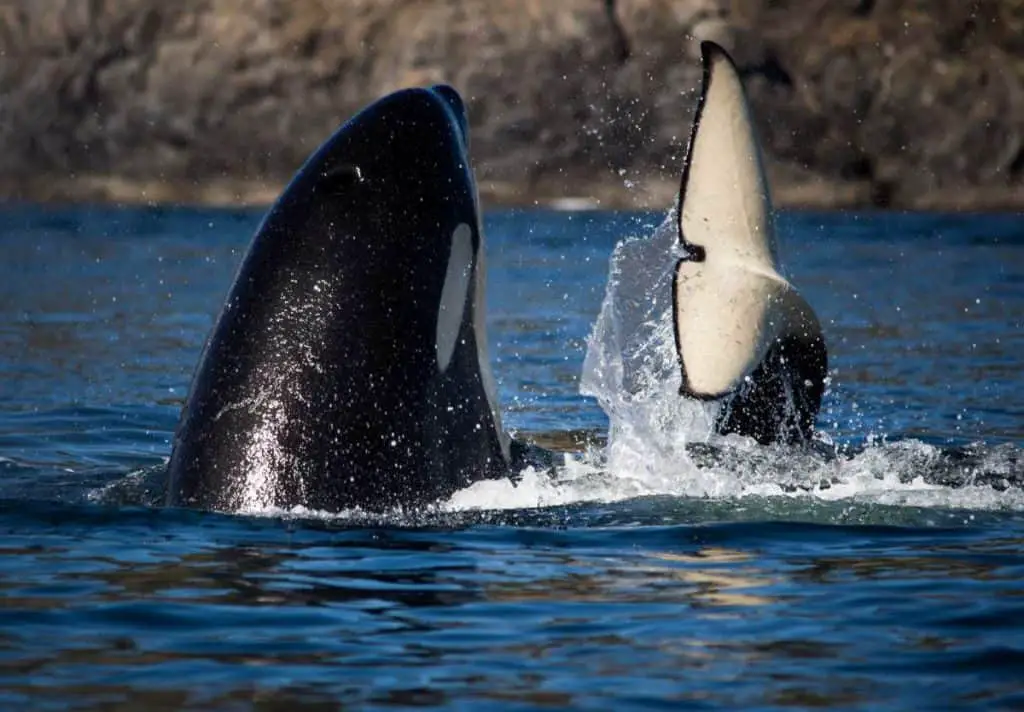
Orcas, also known as killer whales, are one of the most well-known and easily recognizable types of cetaceans. They are large, black and white dolphins that can grow up to 32 feet long and weigh up to six tons.
Orcas may be found in all seas, from the chilly Arctic to the warm seas of the equator. They are highly social animals, living in family groups called pods that can number in the dozens or even hundreds.
Orcas are apex predators, meaning they sit at the top of the food chain. Their diet consists mainly of fish, but they have also been known to eat sharks, seals, and even whales.
Thanks to their intelligence and versatility, orcas have few natural predators. Humans are their only real threat, as we hunt them for their meat and capture them for use in marine parks.
Sadly, this has led to a decline in orcas populations in recent years. However, thanks to increasing public awareness of the plight of these amazing animals, efforts are being made to protect them and ensure their survival for generations to come.
- Lifespan: 30 to 50 Years
- Weight: 8,000 to 16,000 punds.
- Length: 30 feet on average.
13. Whale sharks
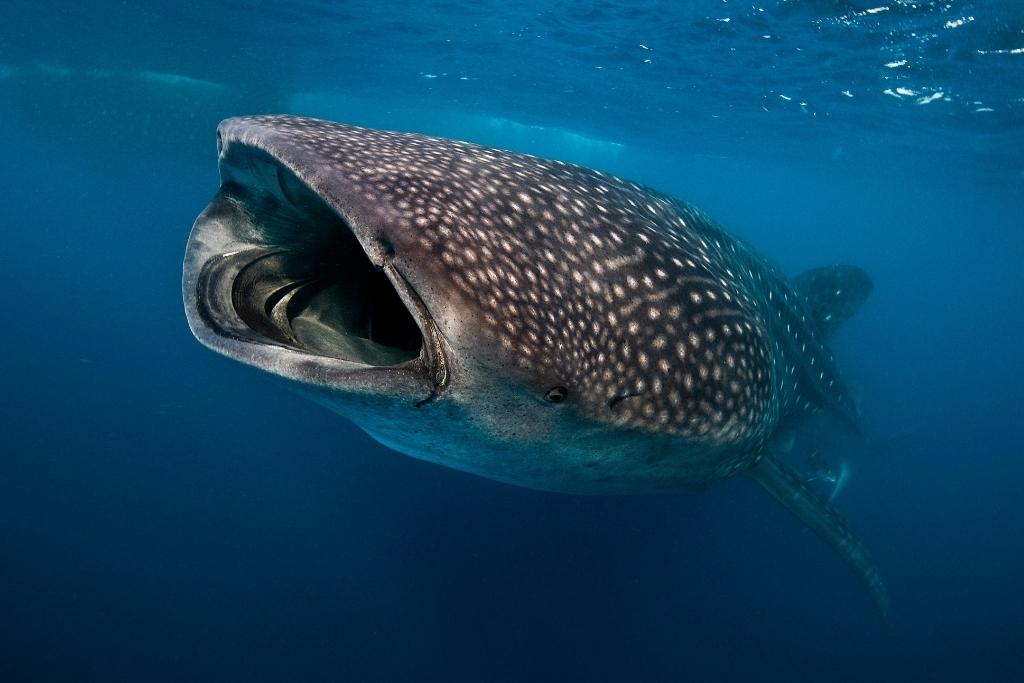
Few creatures evoke such a sense of awe and wonder as the whale shark. These gentle giants of the sea are the largest fish in the world, measuring up to 39 feet in length and weighing up to 5000 lbs.
Despite their size, whale sharks are gentle filter feeders that pose no threat to humans. In fact, they are often curious and will approach divers and snorkelers who venture into their territory.
Although they are widespread in tropical waters around the world, little is known about the migratory patterns of whale sharks.
Scientists believe they may travel vast distances yearly, covering tens of thousands of miles in search of food. However, much more research is needed to better understand these enigmatic creatures.
In recent years, whale sharks have become a popular tourist attraction in many parts of the world.
Swimmers and snorkelers can often spot them near coral reefs or offshore from beaches, where they come to feed on plankton and small fish.
While there is no doubt that seeing a whale shark up close is an unforgettable experience, it is essential to remember that these animals are wild and should be treated with respect.
By understanding more about these fascinating creatures, we can help ensure their survival for future generations to enjoy.
- Lifespan: 70 – 100 Years
- Weight: 41,000 pounds on average.
- Length: 45 Feet on average.
14. Elephant Seal
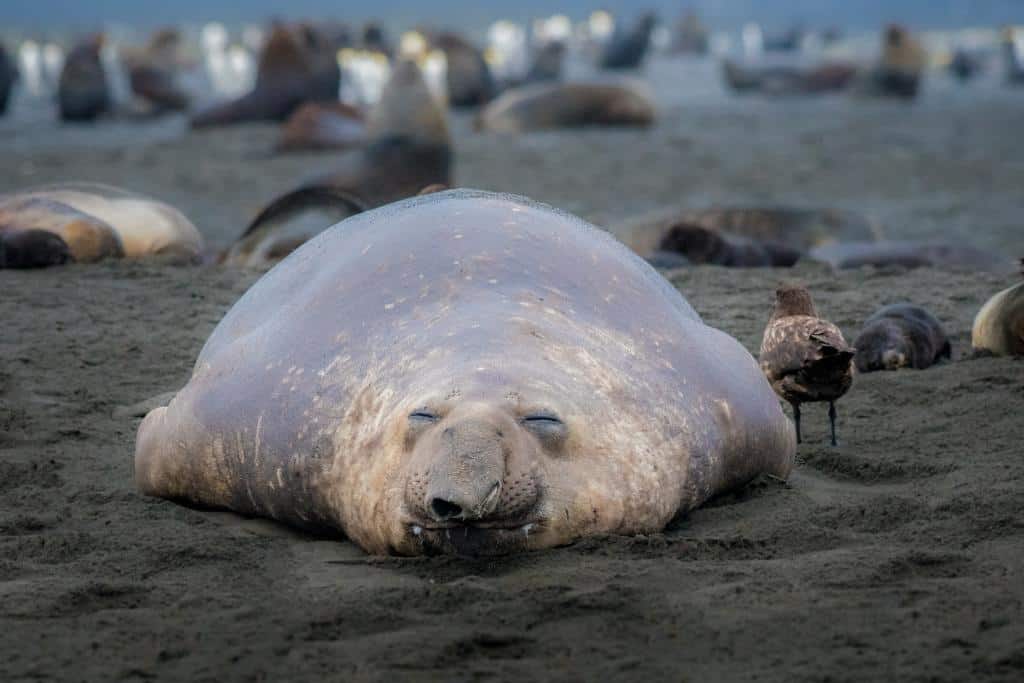
The elephant seal is a large marine mammal that can weigh up to four tons, grow up to 16 feet long, and weigh up to 5000 lbs.
Found in the Pacific Ocean, these seals get their name from their massive size and their thick, wrinkled skin, which is similar to an elephant’s.
Elephant seals spend most of their time at sea, but they come ashore to mate and give birth.
They can hold their breath for up to two hours, which allows them to dive to great depths in search of food. Prey items include fish, squid, and crustaceans.
Although primarily solitary animals, elephant seals can gather on beaches or ice floes in large groups. These gatherings are called “haul-outs” and provide opportunities for socializing, mating, and raising young pups.
Despite their size, elephant seals are agile swimmers and can reach speeds of up to 6 miles per hour. Their primary predators are sharks and killer whales.
However, humans also pose a threat to these animals; hunting and entanglement in fishing gear have resulted in declining populations of elephant seals in some parts of the world.
- Lifespan: 19 Years
- Weight: Up to 5,000 pounds.
- Length: 14 to 16 Feet.
15. Siberian Tiger
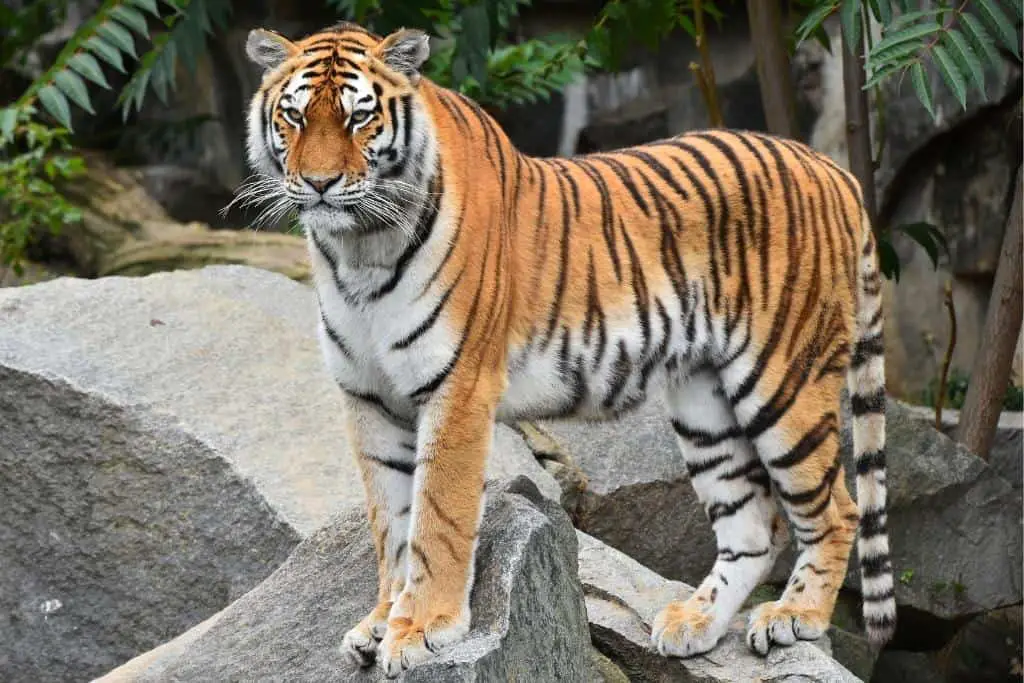
The Siberian tiger (Panthera tigris altaica) is the most giant wild cat in the world. Inhabiting the forests of Russia, China, and North Korea.
Tigers, in general, are apex predators at the top of the food chain. But the Siberian tiger is on top of the apex predators. These magnificent creatures can weigh up to 660 pounds and grow up to 10 feet long.
They are easily recognizable by their orange fur with black stripes, but what sets them apart from other tigers is their thick fur which helps them survive the cold winters in their habitat.
Unfortunately, Siberian tigers are endangered due to habitat loss and illegal hunting, with only an estimated 350-400 adult individuals remaining in the wild.
However, conservation efforts are underway to protect these amazing animals and ensure they have a future in the wild.
- Lifespan: 10- 14 Years in the Wild.
- Weight: 475 pounds on average.
- Length: 11 Feet on average.
16. Gray Wolf
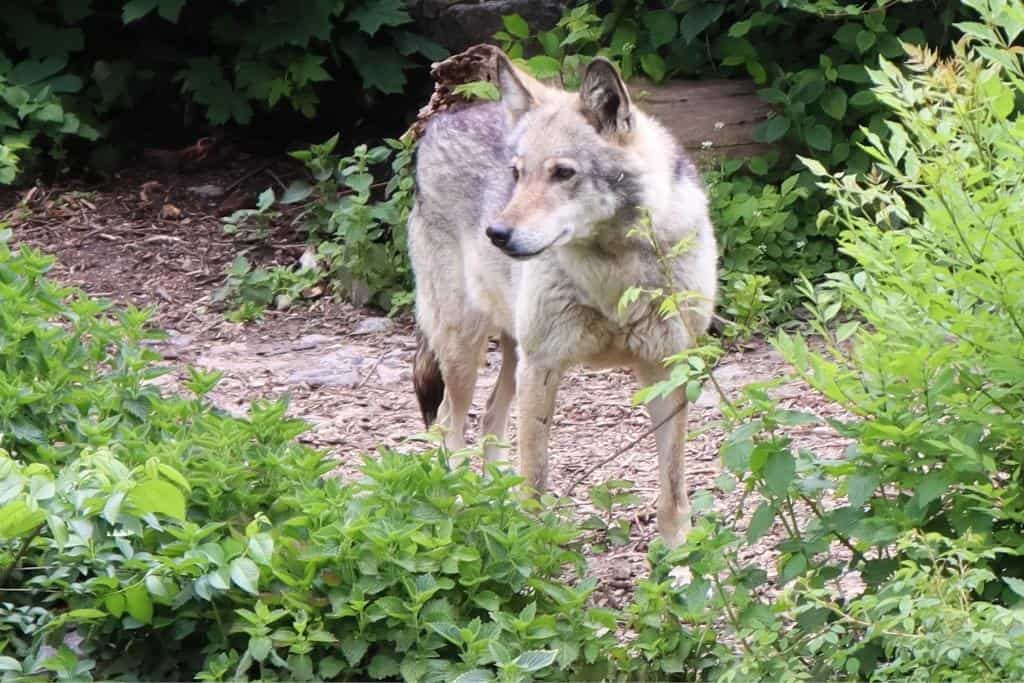
The gray wolf is a large canine native to the forests of North America. Gray wolves are the most prominent Canidae family members, including dogs, jackals, and foxes.
Wolves were once common throughout North America, but they have been largely eradicated from the lower 48 states due to persecution by humans.
Today, gray wolves are primarily found in Alaska, Canada, and parts of the northern United States.
Despite their fearsome reputation, gray wolves are fearless predators with a strong sense of family. Wolves live in packs consisting of a mated pair and their offspring.
The pack members work together to raise their young and hunt for food. Although gray wolves typically prefer to prey on large animals such as deer and moose, they will also eat smaller mammals and carrion.
- Lifespan: 16 Years
- Weight: 60 to 100 Pounds.
- Length: 3 to 5 feet on average.
